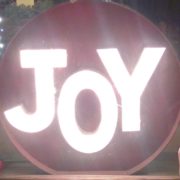5 Intention-setting Ideas to Bring More Joy Into Your Life
This time of year can be stressful for most of us to say the least! For some, including myself, it might also bring up memories of loss, family discord, and unfulfilled dreams. So I did a little research on tools that have been shown to shift us into a space of joy and, when integrated into a regular practice, can make that joy more sustainable and available to us any time of year (also see my Reflections below on Positive Psychology).
To take a deeper dive, perhaps consider saving this website (https://itsallgoodhere.com/) in your Favorites and set a new year intention to explore these tools more.
In the meantime, consider the following intention-setting ideas to try this month:
- Positive Moments. Consider setting an intention to identify at least one positive moment each day in the month of December. You may consider it small, even insignificant, such as the first sip of your morning coffee or tea on a cold morning or climbing under the warm blankets at the end of your day. It doesn’t matter. What matters is that you take time to reflect on that moment and hold the experience in your awareness, perhaps for 10 to 20 seconds. Then, consider sharing that positive moment with someone. If you do this at night and would prefer, you can share it on Social Media. The act of sharing allows the positive moment’s effects to linger for longer, inviting a deeper level of positivity into the body and mind.
- Personal Strengths. Another option to consider for setting an intention for the month of December is to identify one of your personal strengths and then think about how you used it today or within the last couple of weeks. You can stay with one of your personal strengths all month and challenge yourself to identify multiple times/ways you used it or challenge yourself to identify a new strength each day, along with an example of how you applied it in your life. Or it can be a combination of both, it is all good!
- Set a Goal! Perhaps start by simply reflecting on how you felt the last time you accomplished something you set out to do. Can you remember the feelings that come with accomplishment, such as satisfaction, peace, motivation, joy? From there, consider setting one small, attainable goal each day this month with a further intention to track your progress. It can again be something simple like making your bed, finishing that book that you started awhile ago or reaching out to a friend that you haven’t connected with recently. The key is to track your progress, specifically to reflect on how many times you met your goal that day.
- Reframe Negative as Positive. This intention-setting idea might be a little more tricky – looking for the ‘silver lining’ in what our culture might label as negative. When we are able to discover some benefit from an experience that brought us some level of aggravation or upset in the moment, we are doing what is called a ‘positive reappraisal’. How do we do this? Well, it starts with identifying something, whether an event or a routine activity that we find distasteful, for whatever reason. Perhaps it is doing the dishes or getting stuck in traffic. From there, we search for how these things might provide us with some positive outcome that we simply have been ignoring or have refused to consider in the past. So, for the dishes, we might reframe it as now I have dishes ready for the next meal or the kitchen looks more welcoming. For getting stuck in traffic, consider that you have more time to listen to your favorite podcast or music. The more you practice this skill, the easier it gets and you tend to discover multiple positive aspects to every situation!
- Random Acts of Kindness. Honda does not have to have the corner on this market!! And it doesn’t have to cost you a thing! During this season of connection, consider doing something kind for someone else each day this month. It can simply be offering a genuine smile as you pass them walking by, opening a door for someone, or helping someone carry their bags in or out of their car. Remember to take a moment to reflect on what you feel afterwards, sensing how the joy you feel inside is spreading out and touching others!




